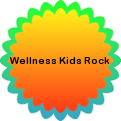
Asthma rates are up astronomically. Kids are experiencing asthma symptoms earlier and more severely according to a study released by the Environment Protection Agency. The study goes on to report that other illnesses are more prevalent – colds, flus and other “childhood” diseases.
Much of the medical community has turned it’s attention to the rise of more virulent strains of diseases, immune to antibiotics, and indeed, there’s a lot to be made for this case. However, it’s also reasonable to assume that there may be more than one source of the problem. Stronger germs, sure. But how about polluted air? Really polluted air in millions of homes?
As we’ve all become more energy conscious, we’ve added insulation, replaced drafty windows and kept the air inside warm and toasty. Problem is, that air tight box also traps dangerous pathogens – mold, dust and dander, volatile chemicals from cleaners and personal products. If the house can’t breathe, what’s happening to the air in your home? The air becomes thick with poisons from everyday products – everything from dish washer soap to underarm deodorant.
Why Air Filters Make Things Worse
So, moms and dads rush out to buy expensive ionizers and air filterin g systems to solve the problem of indoor pollution. But here’s the thing – filtered air isn’t really filtered. In fact, if you don’t maintain the air cleaning gear, you’re making things worse for the family.
g systems to solve the problem of indoor pollution. But here’s the thing – filtered air isn’t really filtered. In fact, if you don’t maintain the air cleaning gear, you’re making things worse for the family.
Here’s why. Air filtering systems draw in air, run it through a filter and pump out clean air. So far so good. But here’s the problem. Within hours of installing a new filter, it already contains pollutants – pollutants through which all other air must pass. And as these pollutants continue to collect, whether in an ionizer or other air filter, the more pollutants are pumped back into the interior of your home.
Filtered air of any kind is filtered for a while, but as more and more containments build up within the collection device, the less effective the air cleaner.
What To Do About Indoor Air Pollution
Use fewer pollutants.
Use cleansing, full-spectrum light sources throughout the house.
Ventilate regularly. Open a window for goodness sake.
Don’t use filter or ionizer air cleaners. They can make the problem worse.
Use exhaust fans or work outside when using toxins. Follow label instructions.
Make your own cleaning products, clean and save a ton of cash at the same time.
Purchase natural fiber clothing for your children.
And that’s just the beginning. Had the furnace tuned up lately? Had the AC cleaned since you bought it? The stuff that grows in wet dark places is gross – like a high school science experiment gone horribly wrong.
There’s plenty you can do to go pro-active in keeping a really clean home. And you won’t find anything useful in the cleaning products aisle of the SuperMagaMart.
Much of the medical community has turned it’s attention to the rise of more virulent strains of diseases, immune to antibiotics, and indeed, there’s a lot to be made for this case. However, it’s also reasonable to assume that there may be more than one source of the problem. Stronger germs, sure. But how about polluted air? Really polluted air in millions of homes?
As we’ve all become more energy conscious, we’ve added insulation, replaced drafty windows and kept the air inside warm and toasty. Problem is, that air tight box also traps dangerous pathogens – mold, dust and dander, volatile chemicals from cleaners and personal products. If the house can’t breathe, what’s happening to the air in your home? The air becomes thick with poisons from everyday products – everything from dish washer soap to underarm deodorant.
Why Air Filters Make Things Worse
So, moms and dads rush out to buy expensive ionizers and air filterin
 g systems to solve the problem of indoor pollution. But here’s the thing – filtered air isn’t really filtered. In fact, if you don’t maintain the air cleaning gear, you’re making things worse for the family.
g systems to solve the problem of indoor pollution. But here’s the thing – filtered air isn’t really filtered. In fact, if you don’t maintain the air cleaning gear, you’re making things worse for the family.Here’s why. Air filtering systems draw in air, run it through a filter and pump out clean air. So far so good. But here’s the problem. Within hours of installing a new filter, it already contains pollutants – pollutants through which all other air must pass. And as these pollutants continue to collect, whether in an ionizer or other air filter, the more pollutants are pumped back into the interior of your home.
Filtered air of any kind is filtered for a while, but as more and more containments build up within the collection device, the less effective the air cleaner.
What To Do About Indoor Air Pollution
Use fewer pollutants.
Use cleansing, full-spectrum light sources throughout the house.
Ventilate regularly. Open a window for goodness sake.
Don’t use filter or ionizer air cleaners. They can make the problem worse.
Use exhaust fans or work outside when using toxins. Follow label instructions.
Make your own cleaning products, clean and save a ton of cash at the same time.
Purchase natural fiber clothing for your children.
And that’s just the beginning. Had the furnace tuned up lately? Had the AC cleaned since you bought it? The stuff that grows in wet dark places is gross – like a high school science experiment gone horribly wrong.
There’s plenty you can do to go pro-active in keeping a really clean home. And you won’t find anything useful in the cleaning products aisle of the SuperMagaMart.






Wow ... great information! I found your blog by hitting "next blog" at the top of the page and I'm so glad that I landed here. I'm going to follow you and add you to my blog roll, if that's ok. I think you have a lot of valuable information to share.
ReplyDeleteThank you!
Small footprints
http://reducefootprints.blogspot.com
Thank you so much for your comment. I just checked out your blog - great information about taking care of the health of our planet that goes hand in hand with taking care of our kids' health.
ReplyDeleteI find it to be rather interesting that I came acorss your blog searching for the Today show segment you featured. Lately I have been reading and hearing a lot of information about indoor air pollution and it's effects on not just children but everyday life. It is scary. Although my boys are grown now I value and commend your efforts on getting the word out for such a silent killer. Grazia!
ReplyDeleteThank you so much, Roxanna, for your kind comment. I'm so excited that you stumbled upon my blog! It is indeed scary that we've all been exposed to these poisons for so long. I'm happy to be one of the voices getting the word out.
ReplyDeleteYou are so right on the mark regarding air filters, Alison. Not only do they get clogged, but from the beginning they require getting the dirty air through them in order to pull out the pollutants. So, as they clog up with the dirt (aka pollutants), their efficiency drops, until they are not filtering anything, just cultivating "who-knows-what" in the filter medium itself. It's much more effective to purify and sanitize the air in place. I've seen these kind of systems help elderly with respiratory problems live comfortably in cigarette-smoke laden housing and asthmatics get their first restful night sleep. Have you any experience with air purifiers vs. air filters?
ReplyDeleteJim,
ReplyDeleteThanks for your comment. I have personal experience with filter-based air purifiers, as well as ionic purifiers (both ozone-producing and non-ozone-producing).
California actually banned non-commercial/industrial ozone-producing air purifiers due to their tendency to worsen asthma and allergy symptoms. The ban takes effect starting in 2009.
I personally have severe allergies, and I have three kids age 6 and under, so air quality issues are top-of-mind for me.
I have yet to find the perfect solution, but I am really excited about a full-spectrum air-cleaning CFL that we are coming out with. Whether the lights are used as a stand-alone solution or as a supplement to another system, they will be a simple, affordable, immediate, maintenance-free, long-lasting way to improve indoor air quality (in addition to providing the many other benefits of full-spectrum light). We hope to have the product available early in 2009.
I am curious as to what kind of system it was that you saw improve asthmatics so much that they could finally rest...it sounds terrific!